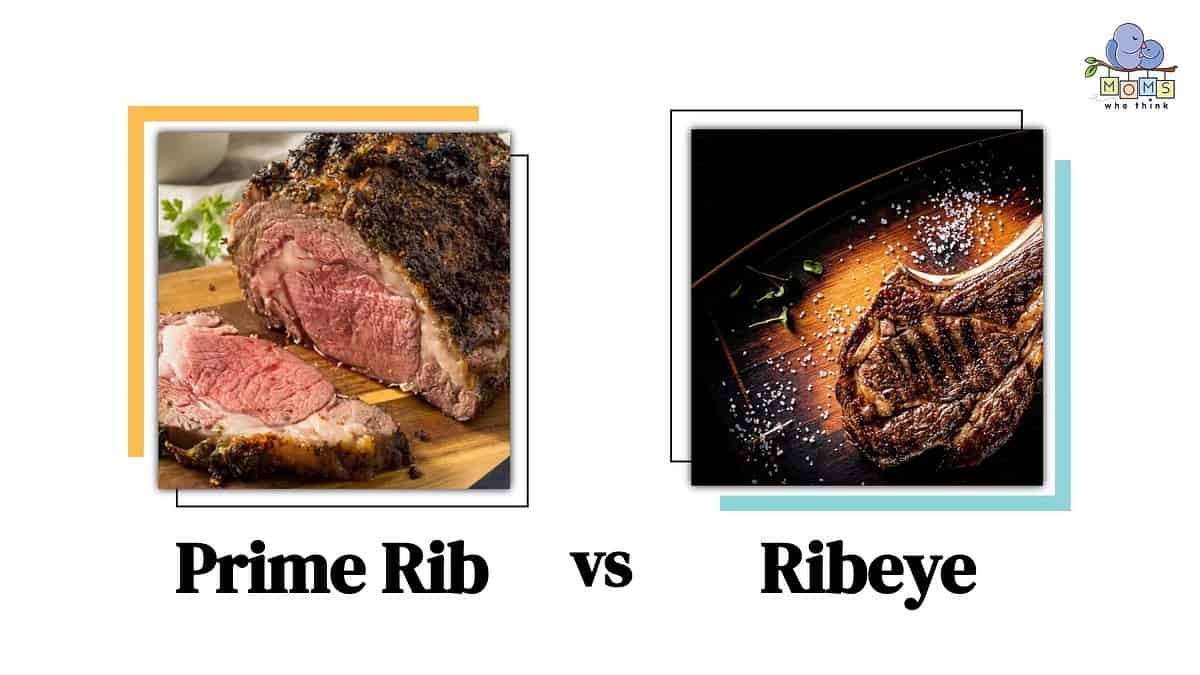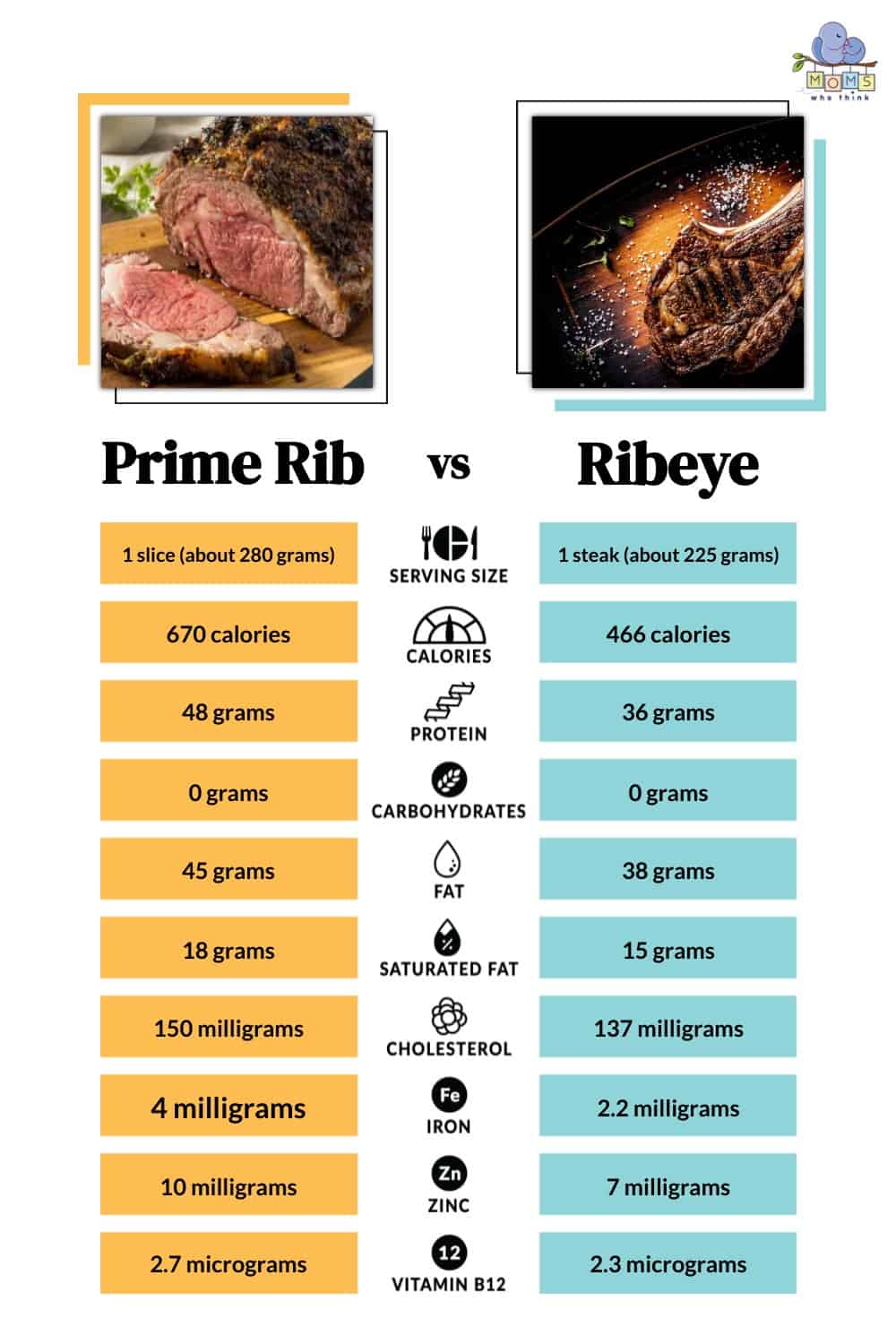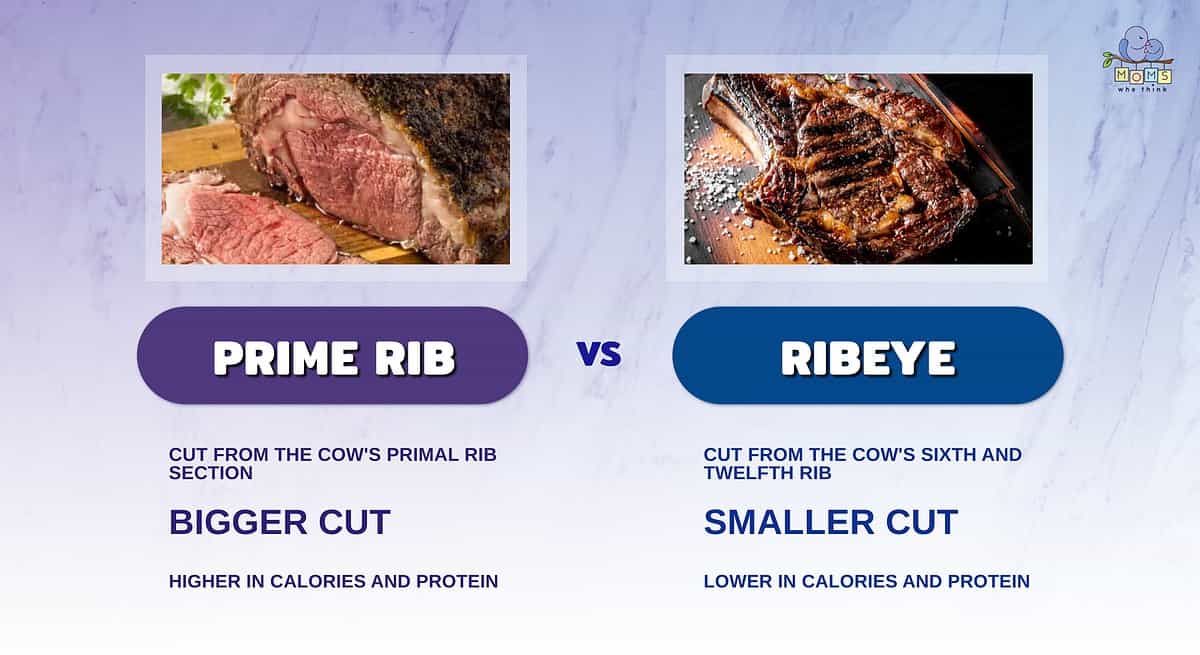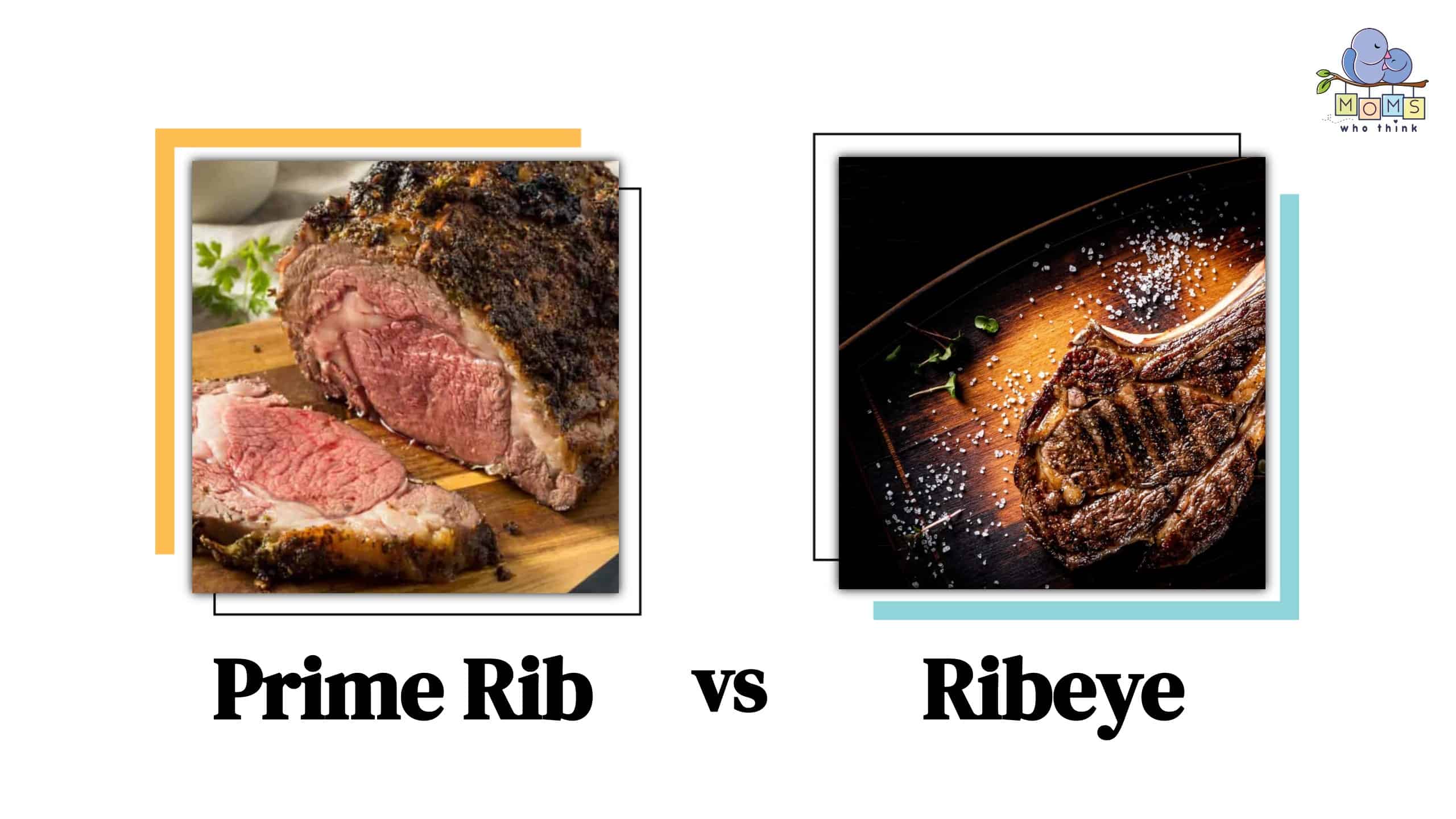Do you prefer to eat meat boneless or bone-in? That's one of the unique differences between prime rib vs. ribeye. Prime rib vs. ribeye: the key difference is knowing which you want more.
Beyond this bone difference, subtle differences exist in how each is cut and cooked. There are also differences in nutritional value, especially if you cook it in a barbecue vs. oven, and the difference in spices and sauces used in preparing it. In this guide, we look at the core differences between these cuts of meats and what makes them unique. You'll better understand how they are different, how they complement different meals, and ultimately, what the better choice is for you to eat.
How Prime Rib and Ribeye Are Cut

- The must-have convenient reference guide for every home cook!
- Includes more than 8,000 substitutions for ingredients, cookware, and techniques.
- Save time and money on by avoiding trips to grab that "missing" ingredient you don't really need.
Prime rib is cut from the cow’s primal rib section, specifically near the lower back part of the cow or the shoulder. Ribeye steak, however, is a beef cut similar to where the prime rib is cut. It's from the cow's sixth and twelfth rib. Sometimes, larger ribeye cuts are designed for larger families or celebrations with large crowds.
The unique thing about prime rib and ribeye is that they both come from the same part of the cow. The reason they look different is that they are processed differently. Prime rib is a bigger part of the cow's primal rib. At the same time, ribeye is a smaller piece that comes from a portion but is still the same part of the cow.
Regardless of how either is cut, they are both delicious. The texture and flavor of the cow is relatively the same (depending on how you cook it). The meat will generally be less tough if the cow's muscle is lean. Typically, the meat within the cow's ribs is fatty and tender, creating a delicious meat of ribeye or prime rib.
How Prime Rib and Ribeye Are Cooked

There is no wrong way to cook ribeye or prime rib. It depends on how you like your meat cooked, from oven-roasted to in the barbecue. The core difference is how it's prepared and what seasoning and sauces you use.
For instance, the rib-eye cut almost always tends to be juicy no matter how you cook it. You can bake, pan, or barbecue; this meat will almost always be tender. Typically, the less time it takes to cook, the more tender it will be.
One of the best ways to cook a rib-eye is to put a cast-iron skillet in the oven on high broil. While it's heating up, you can season the ribeye with salt and seasoning. Then, take your skillet and put it on the stove to cook the steaks on all sides for a few minutes. You can then return the steak and skillet to the oven for 2 minutes. Finally, let the steak rest for 7 minutes. Now you have a delicious steak.
On the other hand, prime rib usually takes a lot longer to cook. For instance, a general rule is to cook every pound of prime rib for 20-30 minutes at 350 degrees. If you add a pound, cook it for another 20 to 30 minutes. Prime rib is similar to a roast in that it's simmered. It's also usually seared to give it a crust before it's placed in the oven.
The Nutritional Value
Prime rib and ribeye are very similar in nutritional value. However, prime rib offers more calories per pound. It also has more protein and more fat. Although higher in this content, these are healthier proteins and fats. Everyone needs protein to build muscle and make hormones and enzymes. While both are lean meats, they are still great healthy meals that can complement salads and other side dishes.
Here are some of the most common kinds of meals you can eat with either prime rib or ribeye that offer tremendous nutritional value.
- Ribeye with Cobb salad
- Sizzling steak with lime basil sauce
- Grilled ribeye with chimichurri
- Prime rib with broccoli salad
- Prime rib with artichokes
- Prime rib with yams
What Should You Cook?

- The prime rib and ribeye come from the same part of the cow. The ribeye comes from the cow's sixth and twelfth rib, while the prime rib is cut from a larger part of the primal rib section.
- Typically, the ribeye is a smaller cut of meat than prime rib.
- A standard cut of prime rib is going to have more calories and protein than a standard cut of ribeye.
There's no wrong choice between ribeye and prime rib. They are both great choices if you want lean meat that tastes tender and delicious. While cooked differently, they still complement much of the same food, like salads and casseroles. They are a great portion of the meal that will impress guests. The most important thing to remember about these meats is that there are various ways to cook, either with sauces or seasoning. Choosing the right one can make a difference in which one you like more.
- The must-have convenient reference guide for every home cook!
- Includes more than 8,000 substitutions for ingredients, cookware, and techniques.
- Save time and money on by avoiding trips to grab that "missing" ingredient you don't really need.
Want to know the best way to eat prime rib? This is the way:
PrintPrime Rib
Ingredients
1 (4 to 5 pound) prime rib roast
1/3 cup olive oil
2 Tablespoons lemon juice
4 garlic cloves, minced
3 Tablespoons rosemary leaves
1 teaspoon pepper
Instructions
1. Place the roast in a shallow roasting pan and set aside 30 minutes to room temperature. Preheat oven to 450 degrees F.
2. Combine all other ingredients. Rub the prime rib with mixture. Bake 15 minutes until the meat begins to brown.
3. Reduce heat to 325 degrees F and continue cooking according to the chart below
Cooking Time for Rare (120°) 3 Ribs, 7 to 8 lbs. 15 minutes at 450°, Then 1 ¼ to 1 ½ hours at 325° |
4. Every half hour or so, baste the ends of the roast with the drippings. Use the meat thermometer about 30 minutes before the end of the roasting time. Make sure to insert it in the thickest part of the meat, not touching the fat or bone.
When the internal temperature reaches 120°, remove roast from the oven and cover with foil. If you remove a prime rib from the oven when the temperature is over 125°, it will be way too dry and overdone.
5. Let the roast sit for twenty to thirty minutes. It will continue to cook during this time, reaching a temperature of about 125° to 130°. This resting period allows the juices and flavors to permeate the roast.


